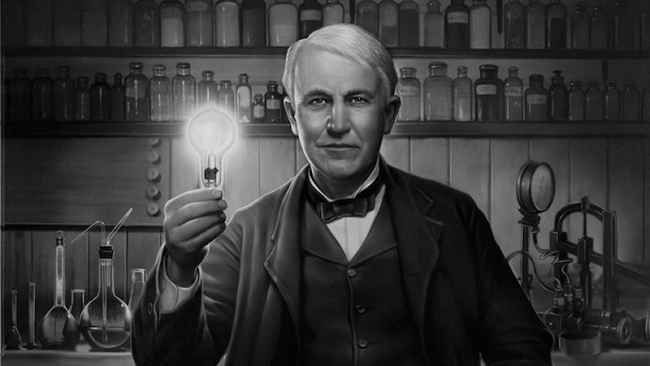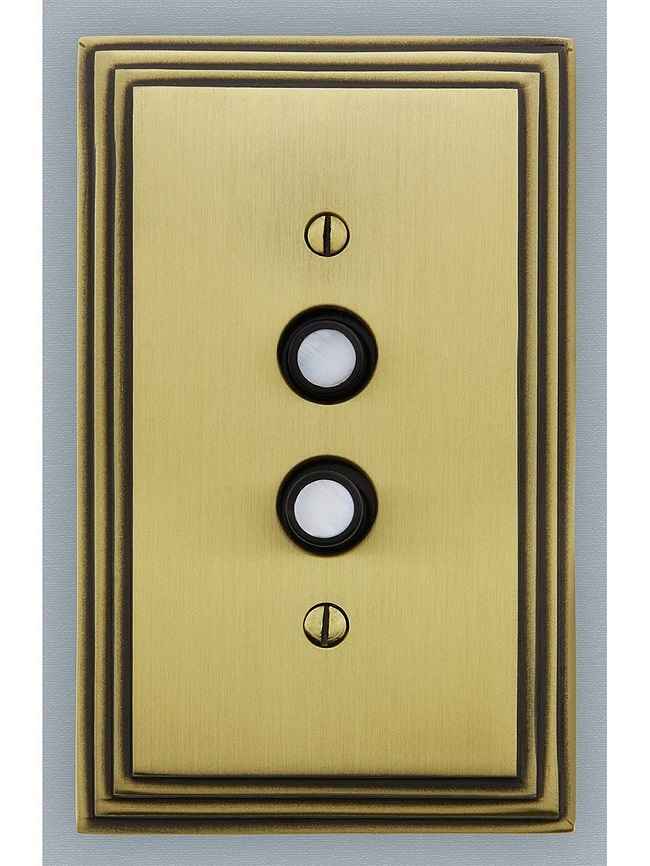The origin of light switches

Circa 1880, an Electrochemical Component profoundly known as the electrical switch entered humankind's lives. In the realms of regulating the flow of current, controlling lights, and performing other functions, these switches have advanced significantly over the years.
The simple discovery of the light switch paved the way for innumerable inventions and advancements in technology.
More than 150 years have passed since Thomas Edison developed the ingenious idea of a functional light bulb, which fundamentally changed how people used energy in both homes and offices. Since the invention of the first light bulb, patented in 1878, engineers and manufacturers have worked hard to improve both the aesthetic and functionality of light switches. While many innovators made some ground-breaking discoveries over the 130-year-long journey of the light switch, others could not create a more significant influence on the world. Nevertheless, their efforts have eventually brought us to the current edition of the Light Switch.
Going back in time, we observe that Thomas Edison, who also significantly contributed to the development of the light bulb, also built the first ever electrical light switch. He created a range of electric appliances, including the electrical switch, for light displays in the 1880's New Year's celebration. Soon after he developed the switch, other engineers and manufacturers worldwide began creating electrical switches that were considered safer and easier to operate by ordinary folks.

The first lightbulb was created by Thomas Edison. When electricity is passed through a thin platinum filament, the process is so slow that the glass is ignited with light for a long period of time.
The first lightbulb was created by Thomas Edison. When electricity is passed through a thin platinum filament, the process is so slow that the glass is ignited with light for a long period of time.
John Henry Holmes, an English electrical engineer, invented the first innovative light switch technique in the year 1883 with the 'quick-break technology' at his workplace in Shieldfield. His innovative, quick break technology basically solved the issue of electrical arcing that used to occur in the switch contacts every time it was opened or closed. By ensuring that the connections came together and separated quickly, Holmes' rapid-break design ensured that the arc would not be given enough time to develop. This breakthrough technology culminated in a switch with long operational life and reduced fire danger for everyone involved.
In the same year, the Wellburn family mansion at Newcastle became the first building to be lit up by electricity as Holmes equipped it with light bulbs and switches created with the ‘rapid-break technology.’ Consequently, in the year 1884, he obtained a patent for this innovation in both Great Britain as well as in the United States.
Many manufacturers worldwide profoundly used John henry’s fast break technique while making their switches. From here on, the journey of light switches took up a considerable amount of speed, and subsequently, more innovations were witnessed by the people of coming generations.
Light Switches Over the Years –
1. Push Switch
The push switch includes touch panels that are located on the top side of the operational button. An electric current is switched on and off via the circuit by pushing it. This switch included two buttons that are pressed one by one; one is pushed while the other is lifted. The elevated button can be pressed to activate or close the alternating energy or electric current.
The push switches are still available on amazon or home decor websites for people who may want to bring on a “vintage’ theme to their homes.

The push switches are still available on amazon or home decor websites for people who may want to bring on a “vintage’ theme to their homes.
2. Dimmer Switch
In 1896, Granville Woods invented the Dimmer switch, a little less-discussed yet incredibly practical invention. Dimmer is an instrument primarily used to control the brightness of a light source attached to the socket. Simply put, the intensity of the light output can be decreased by modifying the output voltages delivered to the source.
When dimmers initially came to the market in the 1890s, they had to be manually moved to be operated. As a result, this operation became increasingly risky, and challenging, and wasted a lot of energy. Therefore, it failed to gain popularity among typical households and was only used in theatres.
3. Toggle Light Switches
Circa 1916, Morris Goldberg and William J. Newton filed a patent for the new and innovative concept of toggle mechanism in Light Switches. Little did we know that this innovation would become a ground-breaking invention that would pave the way for the utilization of switches that we use in modern times.
Toggle switch is still popularly used for MCB’s to control a home or facility’s lighting phases even today. The full form of MCB is a ‘miniature circuit breaker’ as it protects the circuits against short circuits and overloads.

Toggle switch is still popularly used for MCB’s to control a home or facility’s lighting phases even today. The full form of MCB is a ‘miniature circuit breaker’ as it protects the circuits against short circuits and overloads.
This mechanism alters the definition of the switches in literal terms. Rather than directly controlling them, the switch controller regulates the contacts with a series of springs and levers. The spring’s energy is released when the mechanism crosses the center point. The spring then forces the connections quickly and firmly into the closed position with a discernible “snapping” sound.
It was in the year 1984 that the toggle switches were replaced by the ‘silent switch,’ which included the snap action with a much weaker capacity. However, the quality had not diminished. In fact, it now boasts larger, better-quality contacts that can safely transfer residential loads and are pretty safe to use, manual to operate, and simple to understand.
4. Rocker Switch
You have probably noticed one of these switches in your home or workplace. These switches are the most popular among consumers due to their simplicity and durability—they can endure one million clicks- and are currently in widespread usage. Due to their ability to toggle, these switches are also widely known as ‘seesaw switches.’ The current flow can start or stop with each press on these switches. These switches can be turned off or on with a slight click.
Compared to toggle switches, these are by far the least alike. In contrast to toggle switches, which rise when pressed and fall back to their original position when released, rocker switches stay in their tilted position unless they are altered or pushed with external force. One essential illustration of a rocker switch is the Light Switch in your room.
5. Smart Switch
Smart switches are a product of the fact that we live in a century in which we encounter technological breakthroughs nearly every day. It would be fair to state that the smart ones are gradually replacing the traditional switches. Who knows, maybe the conventional switches will be entirely replaced in the next ten years. Switches like the Iotty smart switch, which uses Wi-Fi, don't have typical buttons; instead, you only need to touch them to fill in your command. Additionally, you can also control them using your phone. Similarly, Alexa is a newer and more popular innovation by which lights are turned on and off today.
Although not many people are aware of these switches, since they are still in their infancy, there is an extreme likelihood that they will become widely utilized within a decade since innovation in the 21st century progresses rapidly. Like the Holmes breakthrough 130 years ago, these smart switches mark the beginning of a new invention in the era of light switches.
Where do we stand now?
The next evolution in light switch technology is already here. Considering the rapid increment of materials and technology we have seen in the last decade, a new age of lighting automation can very well be anticipated in the near future.
Perhaps, we have already accepted that automation is the future of Light Switches, and we are ready for it. The introduction of Wi-Fi switches in the market has already signalled the beginning of the transition of light switch technology. You can now use innovative smart technology or a smartphone to regulate your lights whenever you want.
The only point to note here is that not everyone around us has advanced to the point where they use this innovative technology in their daily lives. It would be safer to say that this development is only getting started. Furthermore, many people continue using conventional switches composed of plastic and fossils that have undergone minimal modifications in recent years.
Team Digit
Team Digit is made up of some of the most experienced and geekiest technology editors in India! View Full Profile





